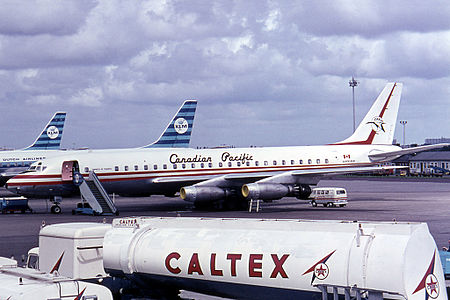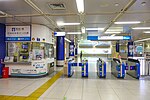Haneda Airport (羽田空港, Haneda Kūkō), officially Tokyo International Airport (東京国際空港, Tōkyō Kokusai Kūkō), and sometimes referred to as Tokyo Haneda Airport or Haneda International Airport (IATA: HND, ICAO: RJTT), is one of two international airports serving the Greater Tokyo Area, the other one being Narita International Airport (NRT). It serves as the primary base of Japan's two major domestic airlines, Japan Airlines (Terminal 1) and All Nippon Airways (Terminal 2), as well as RegionalPlus Wings Corp. (Air Do and Solaseed Air), Skymark Airlines, and StarFlyer. It is located in Ōta, Tokyo, 15 kilometers (9.3 mi) south of Tokyo Station. The facility covers 1,522 hectares (3,761 acres) of land.Haneda was the primary international airport serving Tokyo until 1978; from 1978 to 2010, Haneda handled almost all domestic flights to and from Tokyo as well as "scheduled charter" flights to a small number of major cities in East and Southeast Asia, while Narita handled the vast majority of international flights from further locations. In 2010, a dedicated international terminal, currently Terminal 3, was opened at Haneda in conjunction with the completion of a fourth runway, allowing long-haul flights during night-time hours. Haneda opened up to long-haul service during the daytime in March 2014, with carriers offering nonstop service to 25 cities in 17 countries. Since the resuming of international flights, airlines in Japan strategize Haneda as "Hub of Japan": providing connections between intercontinental flights with Japanese domestic flights, while envisioning Narita as the "Hub of Asia" between intercontinental destinations with Asian destinations.The Japanese government encourages the use of Haneda for premium business routes and the use of Narita for leisure routes and by low-cost carriers. However, the major full-service carriers may have a choice to fly to both airports. Haneda handled 87,098,683 passengers in 2018; by passenger throughput, it was the third-busiest airport in Asia and the fourth-busiest in the world, but was not in the top ten in 2022. It is able to handle 90 million passengers per year following its expansion in 2018. With Haneda and Narita combined, Tokyo has the third-busiest city airport system in the world, after London and New York.
In 2020, Haneda was named the second-best airport after Singapore's Changi Airport and the World's Best Domestic Airport. As of 2021, Haneda was rated by Skytrax as the second Best Airport in-between Qatar's Hamad International Airport and Singapore's Changi Airport, and maintaining its best Domestic Airport title from the previous year.










